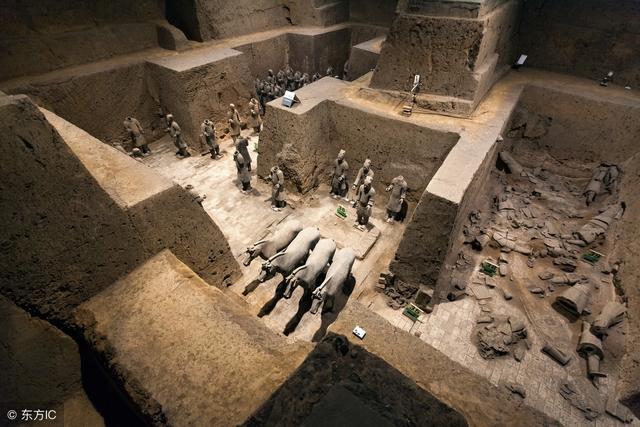
Do Terracotta Warriors Have Space?
Terracotta, a versatile ceramic material, has been employed for various purposes throughout history, from crafting durable building materials to creating exquisite works of art. One aspect that often sparks curiosity is the internal structure of terracotta objects, particularly the presence or absence of space within.
Understanding Terracotta
To delve into the question of space within terracotta warriors, it's crucial to understand the nature of terracotta itself. Terracotta, derived from the Italian words "terra" (earth) and "cotta" (cooked), refers to a type of earthenware clay-based ceramic. This porous ceramic is typically reddish-orange due to the presence of iron oxide in the clay.
Types of Terracotta Finishes
The surface of terracotta can be finished in various ways, each impacting its appearance and durability.
-
Unglazed: This refers to terracotta left in its natural, porous state after firing. While aesthetically pleasing, unglazed terracotta is more susceptible to staining and water damage.
-
Painted: Applying paint to terracotta adds a decorative element and provides a degree of protection against the elements.
-
Slip Glazed: A slip is a liquid mixture of clay and water. Applying a slip glaze creates a thin, often matte finish that enhances the terracotta's color and provides minimal protection.
-
Glazed: Glazing involves applying a vitreous coating to the terracotta surface. This creates a non-porous, glossy finish that offers significant protection against moisture and staining.
Historical Evolution of Terracotta Structure
The internal structure of terracotta objects, including warriors, has evolved over time.
-
Solid Terracotta: In earlier periods, terracotta objects, including warriors, were often crafted as solid pieces. This provided structural integrity, especially for larger sculptures.
-
Hollow Terracotta: Around the 19th century, the technique of creating hollow terracotta gained prominence. This involved constructing the object with a hollow core, often using an internal framework or "web" of clay to support the outer shell.
The Case of Terracotta Warriors
The renowned Terracotta Army, guarding the tomb of China's First Emperor Qin Shi Huang, exemplifies the use of hollow terracotta. These life-sized figures, crafted in the 3rd century BC, exhibit a remarkable level of detail and artistry.
Contrary to the notion of being solid, the Terracotta Warriors are indeed hollow. This structural design served multiple purposes:
-
Conservation of Materials: Crafting hollow figures significantly reduced the amount of clay required, making production more efficient.
-
Prevention of Cracking During Firing: The hollow core allowed for even heat distribution during the firing process, minimizing the risk of cracking due to thermal stress.
-
Lighter Weight: The hollow structure made the warriors lighter, facilitating their transportation and arrangement within the vast tomb complex.
Conclusion
The Terracotta Warriors, despite their imposing presence, are ingeniously crafted with hollow interiors. This technique, adopted for practicality and efficiency, highlights the resourcefulness and skill of ancient Chinese artisans. The hollow spaces within these silent guardians serve as a testament to the ingenuity and artistry of a bygone era.
Q&A
Q: Why are the Terracotta Warriors so famous?
A: The Terracotta Army is renowned for its sheer scale, intricate detail, and historical significance. As a UNESCO World Heritage Site, it offers a captivating glimpse into ancient Chinese civilization.
Q: How tall are the Terracotta Warriors?
A: The height of the warriors varies depending on their rank and role within the army. However, they average around 5'11" (1.8 meters) tall.
Q: Are all Terracotta Warriors hollow?
A: While the vast majority of the Terracotta Army figures are hollow, there might be exceptions. Some smaller figures or elements might have been crafted as solid pieces.